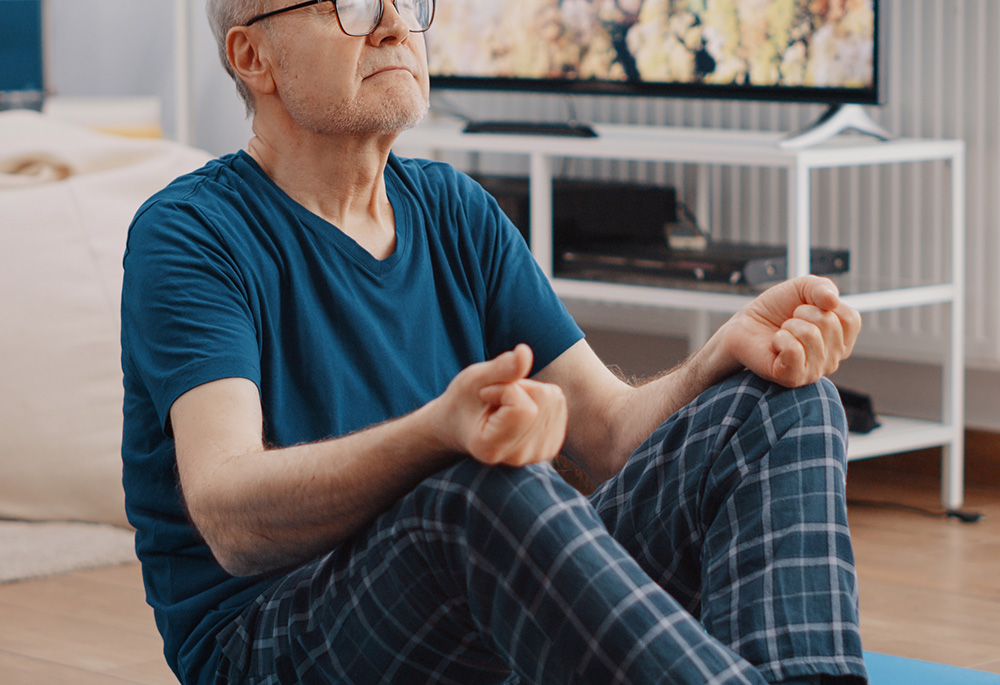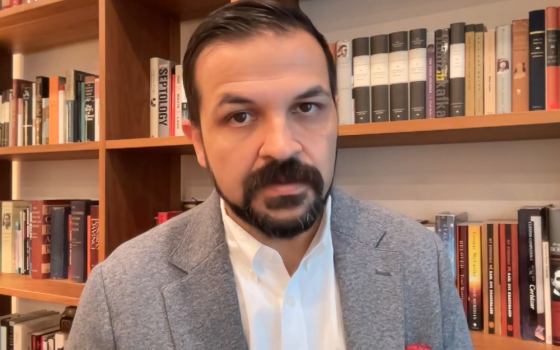
(Dreamstime/Dragoscondrea)
Editor's note: Many of us find it difficult to meditate and want to do it right. Do you have a meditation practice or insight you'd like to share with other readers? Please send 150 words or less to NCR's Soul Seeing editor Michael Leach at leaches@optonline.net. Maybe yours and others will add up to another helpful column on meditation. Thank you.
I have a long history with meditation, starting with my years in the seminary. So you might think I know what it was and how to do it. You would be partially correct.
For me now, meditation is a spiritual exercise of quiet focus which sometimes generates peace, joy and love, offsetting anxiety, depression and fear. Prayer means I talk to God, and meditation implies that God has space to visit with me while I listen. That's my intention at least, even if it is not always my result.
There are occasional brief spurts of satisfying quiet when my mind stops churning out wayward thoughts, unfinished impulses or glimpses of what was or could be. Other times, my wild horse mind gallops into the horizon and I joyfully ride along. I finish my meditation wondering what went wrong, but am resolved to do it again tomorrow. Those brief bursts of satisfying quiet are intoxicating.
I can easily look like I am meditating, with my body sitting up straight, my eyes closed, my arms and hands in an open position resting on my legs.
There is a 23-by-19-inch handmade wooden table standing devoutly against the wall opposite my couch in my meditation room. On the table rests a lighted candle, a delicate Willow Tree figurine named "Remember," a textured 6.5 wooden cross with RIO carved in its base and an elegant vase with blades of ripened wheat.
Their visual harmony blesses the room and invites prayer and meditation. But I wonder if the sturdy pillow and heating pad on my back are welcome in that sacred setting.
I do my daily 30 minutes in my meditation room quite faithfully. But am I doing it right?
Regardless of our physical setting, we all know that the core of meditation takes place inside our minds, spirit, psyche and everything else inside us. Following sound, age-proven advice, many of us follow our breathing process to clear our mind and open space for nothing — a nothing that invites God and generates peace, joy and love.
In Matthew 6:5-8, Jesus says to "pray alone and to use few words ... go into your room, close the door and pray to your father who is unseen." That fits nicely with a listening approach to meditation.
My curiosity urges me to ask: Do you really experience that creative and enriching empty space when you meditate and, if so, how often do you get there and how long can you stay there?
To be honest, I don't get there very often, and I can't hold it very long when I do. But I do my daily 30 minutes in my meditation room quite faithfully. But am I doing it right?
For many decades, I stopped trying to meditate. Nothing was happening. I couldn't quiet my mind, and I found other things to do with my time.
But then, Whisper, as I call her — the voice in my head or Spirit in my soul — insisted I try again, and I have learned over decades to follow her lead.
I keep lighting my little candle on the meditation table and turning on my heating pad while I meditate, or think, or daydream, or solve problems, or repeat some formula prayers, or read a daily reflection, or breathe. It looks like I am meditating, and I tell myself that's what I am doing. But who knows? Not me.
Maybe that's as good as it gets. My early experience with meditation, in the seminary, got me started on the wrong foot. We had a daily half hour in the chapel at 6:30am for meditation, and the night before, our spiritual director fed us a steady diet of unhelpful, old-fashioned theology about the crucified Jesus who suffered miserably and groaned bravely as he hung on an unmerited cross and bled martyred pain into my wicked soul. And I did that to him. My sins, large ones and little ones, congealed into the lashes that scourged his back, thorned his head and nailed his hands to the cross.
Advertisement
My guilt was profound, pervasive and deserved. Relief, then, would come only if and when I truly and completely accepted my part in his suffering and death and humbly begged for his forgiveness. His mercy was real, but conditioned on the sincerity of my prayerful confession and resolution to never sin again.
My meditation on these themes did not bring me peace, joy and love.
My daily presence in those pews grew weary, so I resorted to other forms of "meditation." Sometimes I fell asleep or head-studied a test scheduled for that day, or daydreamed about a basketball game later, or thought about my family. I knew nothing of clearing my mind, but this was 60 years ago.
When the suffering Jesus became overwhelming, I tried to fill my mind with holy thoughts, correct doctrine, desirable virtues and willing obedience. That was meditation in those days: lots of thinking and internal praying.
It didn't dawn on me to just listen quietly. As I got older, I learned I was not doing it right, so I stopped it entirely.
In midlife, along comes Trappist Fr. Thomas Keating and centering prayer, transcendental meditation, Eastern spiritual philosophies and practices, mindfulness, secular meditation and self-awareness techniques, all promoting quiet personal time. Research studies indicated positive results for many practitioners.
Controversies emerged among some traditional religions because these forms of meditation do not explicitly include key doctrinal beliefs of these religions. And where was the Jesus whose suffering our sins were responsible for?
Proponents of these more expanded forms of meditation do maintain that this way of meditating is compatible with traditional teachings. That discussion continues.
Since my history with meditation is a mixed bag at best, I rethought my approach and experimented with a hybrid version that includes attempts at mind-clearing and listening as well as a brief daily reading from an Al-Anon source and ending with a version of the the serenity prayer written by my deceased daughter, which I pray out loud though no one else is there.
There are times when my mind-clearing does not go too well, and I wind up thinking about a project I am working on, a confusion that needs clarification, a relationship that is troubled or exceptionally engaging or an inspiration I want to nourish. I do not always clear those ideas, but I let them flow if they bring peace, joy or love to my soul.
I justify that approach because I interpret it as Whisper talking with me. Besides, the heating pad does help my back.
So, is there a right or wrong way to meditate? Good question? In any case, I'm probably not the right person to answer it.





